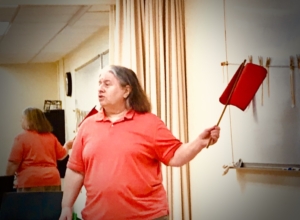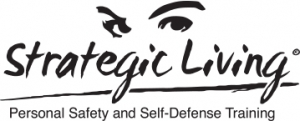Red flags. Those warnings that something is amiss. Also called trusting your gut feelings, listening to your intuition, paying attention to your instincts. That’s recognizing boundary violations, which is why we feel uncomfortable. We know what that feels like, and we also sometimes try to sweep those feelings aside. Have you ever ignored red flags? How does that usually turn out? Why do so many of us ignore them?
I think a large part is that most of us do want to get along with most people — neighbors, co-workers, family, clients, coaches, acquaintances, friends. A lot of us also feel that the red flag in question, the words or behavior that jolted us into this questioning mindset, is so small it’s insignificant. And besides, different people have different boundaries, right? That’s just their particular boundary, right? Not everyone with different boundaries means harm — most don’t! Though some do, and how do you tell the difference?
In the beginning, you don’t. It’s hard to determine if that slight boundary bump was inadvertent or a deliberate boundary test as you’re getting to know someone. However, what you can rely on is that feeling of discomfort. That’s what’s important. And you are entitled to have your own boundaries.
In my self-defense classes I often ask students what they are currently doing to keep themselves safer. Most answer along the lines of not going out alone at night, or parking their car in a well-lit space, or locking doors and windows, or carrying pepper spray, or keeping their keys in their hand at the ready. Most actions that people take to keep themselves safer involve threat from strangers. Yet women are far more likely to be assaulted by someone they know, someone who’s done boundary testing to make sure you’d be a good victim.
How do you stay safer with people you know? By setting your boundaries when you feel the red flags. That might seem  uncomfortable. You have boundaries with everyone, even your family and best friends, that’s healthy. Even small ones. In a matter-of-fact manner, with confidence. Manipulators hate having boundaries set. You might experience a bit of pushback, to see if those boundaries are real. So keep them real as you set them. And set them
uncomfortable. You have boundaries with everyone, even your family and best friends, that’s healthy. Even small ones. In a matter-of-fact manner, with confidence. Manipulators hate having boundaries set. You might experience a bit of pushback, to see if those boundaries are real. So keep them real as you set them. And set them
You can use your voice. It is a really good idea to verbally articulate your boundaries. Use your body language. Your voice and your body language should work together. Take up some more of your space bubble. Use your arms and hands to take up that space — you can talk with your hands. Stand up straight. Good eye-to-face-contact. And when you’re setting a boundary you don’t have to smile at them.
In my classes I also ask students who they want to smile at. Responses generally are family, friends, pets, small children, people I like. People I want to encourage. If you are setting a boundary to discourage a specific behavior, you probably don’t want to smile at that person! It can send a mixed message, with your words saying no but your tone saying maybe or try harder or even yes if you convince me. You want your words and body language to be congruent, to work together.
Use your feet! Control the distance between you and the other person. If someone is standing too close during a conversation, you can step back and use your hands, talk with your hands, to occupy that space.
Sometimes students are worried about making the other person angry, or losing the relationship. I think of it this way. If someone told me that I were standing a bit too close during a conversation, I’d feel a bit embarrassed that my action made someone I care about uncomfortable. How about you? That being said, sometimes setting new boundaries in old relationships will come with some pushback and discomfort, as the other person may be left wondering what’s going on and feel at a loss. It may take some emotional effort, some back-and-forth, communication of intent, and even some justification. But as a result, you may have better boundaries and better relationships.

 Your voice is your most effective safety tool. Yet it’s the tool most folk, especially women and girls, are reluctant to use. “Do I have to say anything?” is a too-common question in class. The answer is no, you don’t HAVE to do or say anything you don’t want to, and there are some cases where saying nothing may be your best choice. That being said, there are reasons why using your voice is an essential tool.
Your voice is your most effective safety tool. Yet it’s the tool most folk, especially women and girls, are reluctant to use. “Do I have to say anything?” is a too-common question in class. The answer is no, you don’t HAVE to do or say anything you don’t want to, and there are some cases where saying nothing may be your best choice. That being said, there are reasons why using your voice is an essential tool.
